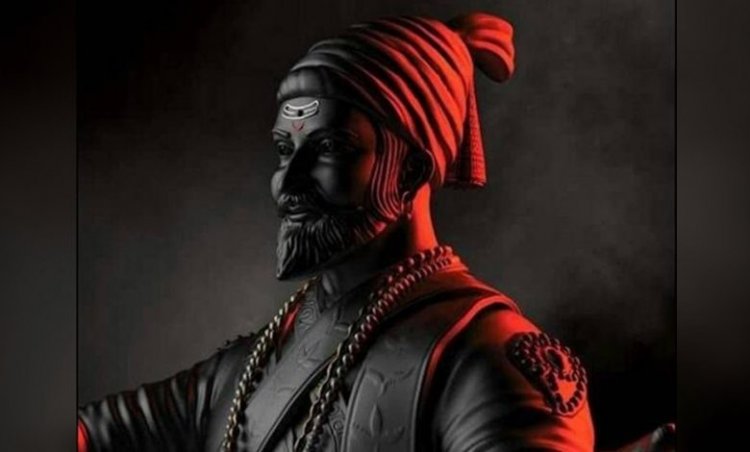Remembering Chhatrapati Shivaji Maharaj - The Inception of His Reign

“The pinnacle of determination, protector of people, resolute in intent, wealthy yet detached from his opulence. There is no other on this earth, who has protected any people; it is because of you that the culture of Maharashtra survived.”
This is Shivaji Maharaj described by his own guru Samarth Ramdas Swami. The Shivaji Maharaj was an Indian warrior-king and a member of the Bhonsle Maratha clan. Shivaji Maharaj carved out an enclave from the declining Adilshahi sultanate of Bijapur that formed the genesis of the Maratha Empire.
Today, back in 1674, Shivaji Maharaj was crowned Chhatrapati (‘paramount sovereign’) of the Marathas. The man who laid the foundation Maratha Empire, Chhatrapati Shivaji Maharaj is celebrated throughout Maharashtra and the rest of India for his conquests and valour.
Remembering his coronation day (Rajya-Abhishek), a series of events are usually planned on June 5 and 6 at the Raigad fort located in neighbouring Raigad district, around 170 kms from Mumbai. Nearly four lakh people every year converges at the historic Raigad fort in Maharashtra to celebrate the anniversary of the Maratha warrior king Chhatrapati Shivaji Maharaj's coronation ceremony on June 6.
Interestingly, the World Environment Day falls on 5 June and anniversary of Shivaji Maharaj's coronation on 6 June. As per Sambhajiraje Chhatrapati, Rajya Sabha MP, who is the chairman of Raigad Development Authority (RDA), celebrations incorporate various other issues related to forts and their conservation, heritage, history and environment.
The Celebration:
It is believed that Englishman Henry Oxenden was present when Shivaji Maharaj was coronated. So, the celebration takes place in the presence of diplomats from five countries (like in the last year).
Diplomats from China, Poland, Greece, Bulgaria, and Tunisia attend the event. People start converging around the fort. A 'puja' is conducted in the presence of sarpanches (village heads) and people from 21 villages around the fort. There is a display of Shivaji-era martial arts and an exhibition on Raigad fort.
Besides, there is also a presentation on works undertaken by the RDA followed by cultural events. Flag hoisting takes place, followed by the arrival of 'palkhi' of Shivaji Maharaj. Shivaji Maharaj's descendants also attend the event.
Shivaji Maharaj is considered to be a symbol of ultimate power and a dedicated protector of his people. Let us visit his period of reign as the powerful Maratha king.
Chhatrapati Shivaji Maharaj as the King:
Shivaji was descended from a line of prominent nobles. India at that time was under Muslim rule - the Mughals in the north and the Muslim sultans of Bijapur and Golconda in the south. All three ruled by right of conquest, with no pretence that they had any obligations toward those who they ruled. Shivaji, whose ancestral estates were situated in the Deccan, in the realm of the Bijapur sultans, found the Muslim oppression and religious persecution of the Hindus so intolerable that, by the time he was 16, he convinced himself that he was the divinely appointed instrument of the cause of Hindu freedom.
A very meticulous and calculated mind -
Collecting a band of followers, he began about 1655 to seize the weaker Bijapur outposts.
When the sultan of Bijapur in 1659 sent an army of 20,000 under Afẕal Khan to defeat him, Shivaji, pretending to be intimidated, enticed the force deep into difficult mountain terrain and then killed Afẕal Khan at a meeting to which he had lured him by submissive appeals. Meanwhile, handpicked troops that had been previously positioned swooped down on the unwary Bijapur army and routed it. Overnight, Shivaji had become a formidable warlord, possessing the horses, the guns, and the ammunition of the Bijapur army.
The Rise of ‘Shivaji’:
For the next couple of decades, Shivaji Maharaj successfully tackled the two mightiest dynasties- the Adilshahi in the south and the Mughals in the north. Step-by-step Chhatrapati Shivaji Maharaj secured the forts in the Western Ghats and Konkan coast.
The period of 17th century was an era of chaos and general discontent among the Hindu population of the Deccan. People secretly desired for a saviour who could eliminate the injustice and promise them the land to call their own. The liberator finally arose. History names him as Chatrapati Shivaji Maharaj.
Rajya-Abhishek of the Maharaj:
The subjects of Shivaji already recognized him as king. But to fulfill his dream of Hindavi Swarajya, he needed a broader recognition. Hence, the need for coronation arose. The coronation took place on the 13th day (trayodashi) of the first fortnight of the month of Jyeshtha, 6th June 1674 at Raigad Fort.
The ceremony was conducted as per the Shastras by Vishweshwar or Gaga Bhatta of Varanasi. Gaga Bhatta knew all four Vedas, the six philosophies, and all the Hindu scriptures. Several learned men cross-checked the Sanskrit texts and Smritis to understand the exact procedure. Many religious ceremonies were performed before the coronation and Shivaji visited major temples.
The priests chanted holy verses. The crowd sang praises; musical instruments were played and military artillery fired salvos simultaneously, while Shivaji sat on the throne adorned with emblems and other such auspicious materials.
Independent Sovereignty:
The suppressed Hindu majority rallied to him as their leader. He ruled his domain for six years, through a cabinet of eight ministers. A devout Hindu, who prided himself as the protector of his religion, he broke tradition by commanding that two of his relatives, who had been forcibly converted to Islam, should be taken back into the Hindu fold. Yet, even though both Christians and Muslims often imposed their creeds on the populace by force, he respected the beliefs and protected the places of worship of both communities. Many Muslims were in his service. After his coronation, his most noteworthy campaign was in the south, during which he forged an alliance with the sultans and thereby blocked the grand design of the Mughals to spread their rule over the entire subcontinent.
Shivaji was able to expand the sphere of the Maratha Empire and was instrumental in building the Maratha navy. Shivaji was the first to realise the importance of having a naval force and thus is known as the ‘Father of Indian Navy’. He established a navy and forts at the coastline to defend Maharashtra on Konkan's side. Jaigad, Vijaydurg, and Sindhudurg forts are a testimony to Shivaji's efforts, ideas, and valour. He was known both, for alliances and wars with the Mughal Empire, Sultanate of Golkonda, Sultanate of Bijapur as well as the Europeans.
Chhatrapati Shivaji is said to have innovated military tactics and pioneered unconventional methods. At the same time, he revived ancient Hindu political traditions and court conventions. Moreover, he promoted the usage of Marathi and Sanskrit and not Persian, in court and administration.
Shivaji had several wives and two sons. His last years were shadowed by the apostasy of his elder son, who, at one stage, defected to the Mughals and was brought back only with the utmost difficulty. The strain of guarding his kingdom against its enemies in the face of bitter domestic strife and discord among his ministers hastened his end.
The man that British politician and author Thomas Babington Macaulay (later Baron Macaulay of Rothley) called ‘the Great Shivaji’ died after an illness in April 1680, in the mountain stronghold of Rajgarh, which he had made his capital.
In a place and age stained by religious brutality and barbaric actions, which by the way is still prevalent in this contemporary world, he was one of few rulers who practiced true religious tolerance. We and our forefathers never have been much graced to be ruled by such a brave and chivalrous king.
A golden day in history, today we pay our most sincere tributes to one of our greatest kings of all time!















































